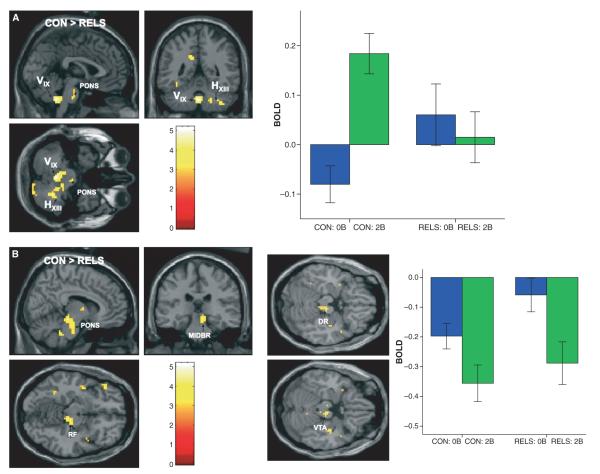Fig. 1.
SPM(t) maps showing greater blood-oxygen-dependent (BOLD) signal change (activation) in (A) the cerebellar vermis IX (VIX) and hemispheric XIII (HXIII) regions and (B) less deactivation in the midbrain (MIDBR)/pons (PONS) region [including the reticular formation (RF), dorsal raphe (DR), and ventral tegmental area (VTA)] in controls (CON) compared to first-degree relatives of persons with bipolar disorder (RELS) during working memory (WM) [2-back WM > 0-back task contrast; color scale = t-value; MNI coordinates of peak voxel: (A) cerebellar vermis: x = 0, y = −48, z = −42; (B) MIDBR/PONS: x = 9, y = −27, z = −12]. Graph depicts parameter estimates (mean BOLD fMRI signal change, with standard error bars) extracted from the cerebellar vermis and MIDBR/PONS clusters for the 0-back (0B) and 2-back (2B) conditions relative to fixation (represented by the zero baseline) for each group.

